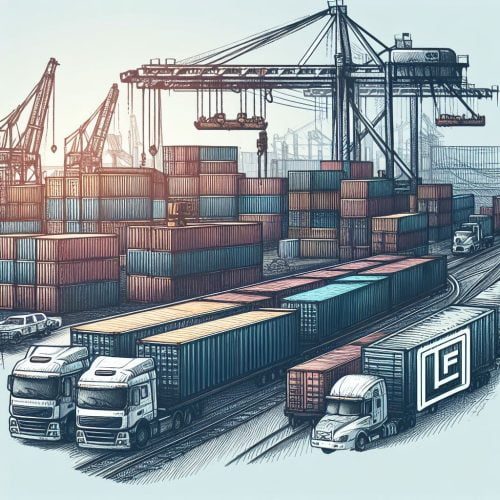Become a Freight Broker Online!
Table of Contents:
- Introduction
- Flexibility and Convenience
- Cost Savings
- Access to a Wide Range of Resources
- Self-Paced Learning
- Prepare for a Career Change or Advancement
- FAQs
- Conclusion
Introduction In the ever-evolving logistics industry, freight brokers play a vital role in connecting shippers with carriers. As the demand for skilled freight brokers grows, so does the need for comprehensive training. Online training classes have emerged as a popular and effective way to prepare for a career in freight brokerage. This blog post explores the many benefits of enrolling in freight broker online training classes and how they can set you up for success.
Flexibility and Convenience One of the most significant advantages of online training is the flexibility it offers. Unlike traditional in-person classes, online training allows you to learn at your own pace and on your schedule. This is particularly beneficial for those who are balancing work, family, or other commitments. You can access course materials, lectures, and assignments anytime, anywhere, making it easier to fit learning into your busy life.
Cost Savings Online training classes often cost less than their in-person counterparts. You can save money on commuting, accommodation, and other expenses associated with attending physical classes. Additionally, many online programs offer various payment plans and financial aid options, making it more affordable to gain the education you need.
Access to a Wide Range of Resources Online training programs typically provide a wealth of resources, including video tutorials, webinars, e-books, and interactive simulations. These resources can enhance your learning experience and provide you with a deeper understanding of the freight brokerage industry. Moreover, you can revisit these materials as often as needed, ensuring you fully grasp the concepts.
Self-Paced Learning Everyone learns at a different pace. Online training allows you to progress through the material at a speed that suits you. This personalized approach ensures that you fully understand each topic before moving on to the next, which can lead to better retention and comprehension. Self-paced learning also reduces the pressure and stress that can come with traditional classroom settings.
Prepare for a Career Change or Advancement Online freight broker training classes are ideal for individuals looking to switch careers or advance in their current roles. The flexibility of online learning means you can continue working while gaining the skills and knowledge needed to transition into a freight brokerage role. This seamless integration of work and study can help you achieve your career goals without sacrificing your current job.
FAQs
- How does the cost of online training compare to in-person programs? Online training is generally more affordable than in-person programs. You save on transportation, accommodation, and other costs associated with attending physical classes. Additionally, many online programs offer flexible payment plans and financial aid options.
- Can online programs be completed while working a full-time job? Yes, one of the key benefits of online training is its flexibility. You can access course materials and complete assignments at your convenience, making it possible to balance your studies with a full-time job.
- Are online certificates recognized by employers in the freight industry? Many reputable online programs are recognized and respected by employers in the freight industry. It’s important to choose a program that is accredited and has a good reputation within the industry.
- What additional resources or support do online programs typically offer? Online programs often provide a variety of resources, including video tutorials, webinars, e-books, and interactive simulations. Many also offer support services such as access to instructors, discussion forums, and career placement assistance.
Conclusion Freight broker online training classes offer numerous benefits, including flexibility, cost savings, access to a wide range of resources, and self-paced learning. Whether you’re looking to start a new career or advance in your current one, online training can provide you with the skills and knowledge needed to succeed in the freight brokerage industry. Embrace the advantages of online learning and take the first step towards a rewarding and lucrative career as a freight broker.
Growth + Change = Opportunity!









